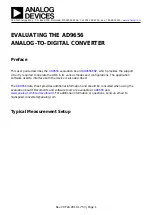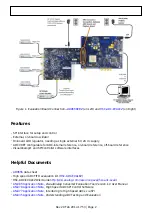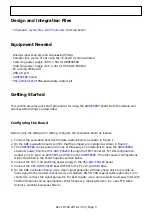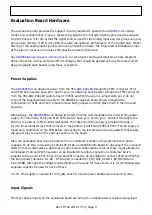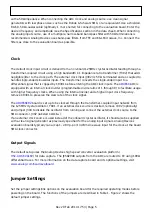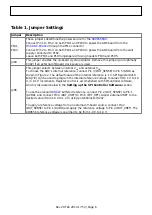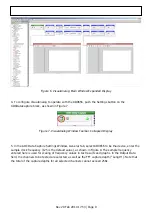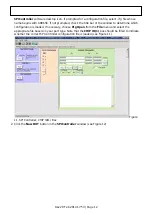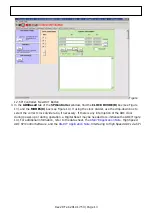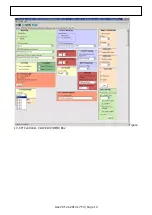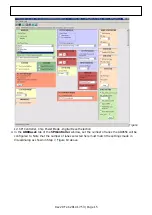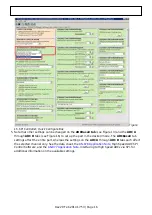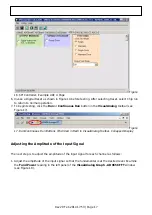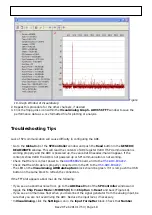
Rev 20 Feb 2014 17:53 | Page 4
Evaluation Board Hardware
The evaluation board provides the support circuitry required to operate the
modes and configurations. Figure 1 shows the typical bench characterization setup used to evaluate
AC performance. It is critical that the signal sources used for the analog input and clock have very low
phase noise (ideally ~100 fs rms jitter) to realize the optimum performance of the signal chain. Proper
filtering of the analog input signal to remove harmonics and lower the integrated or broadband noise
at the input is necessary to achieve the specified noise performance.
AD9656 Design Support <Coming Soon>
for schematics and layout diagrams. These diagrams
demonstrate the routing and grounding techniques that should be applied at the system level when
designing application boards using these converters.
Power Supplies
can obtain its power from the
through the FMC connector. P101
and P103 both need to have pin 1 tied to pin 2 for obtaining board power through the FMC connector
from the HSC-ADC-EVALEZ capture board. If P101 and P103 have pin 1 jumpered to pin 2, do not
connect the supplied 6V wall supply to the AD9656 evaluation board. When changing the
configuration of P101 and P103, please remove both jumpers and then place them in their desired
positions.
Alternatively, the
can obtain its power from the wall-mountable 6V, 2A switching power
supply. For this mode, P101 and P103 both need to have pin 2 tied to pin 3. Connect the supply to a
100V ac to 240V ac, 47Hz to 63Hz wall outlet. The output from the supply is provided through a
2.1mm inner diameter jack that connects to the printed circuit board (PCB) at P102. The 6V supply is
fused and conditioned on the PCB before connecting to the low dropout linear regulators that supply
the proper bias to each of the various sections on the board.
Also, the evaluation board can be powered in a nondefault condition using external bench power
supplies. To do this, remove the E104, E105, E106, and E108 ferrite beads to disconnect the on-board
LDOs from the power planes. Note that in some board configurations some of these might already be
uninstalled. P104 and P105 headers can be installed to facilitate connection of external bench
supplies to the board. E110, E111, E112 and E113 need to be populated to connect P104 and P105 to
the board power domains. A 1.8V , 0.5A supply is needed for 1.8V_DUT_AVDD, 1.8V_DRVDD and
1.8V_DVDD. Although the voltage requirements are the same for these three, it is recommended that
separate supplies be used for each of these.
A 3.3V, 0.5A supply is needed for 3.3V_DIG, which is used to power additional on board circuitry.
Input Signals
The four channel inputs on the evaluation board are set up for a double balun-coupled analog input

